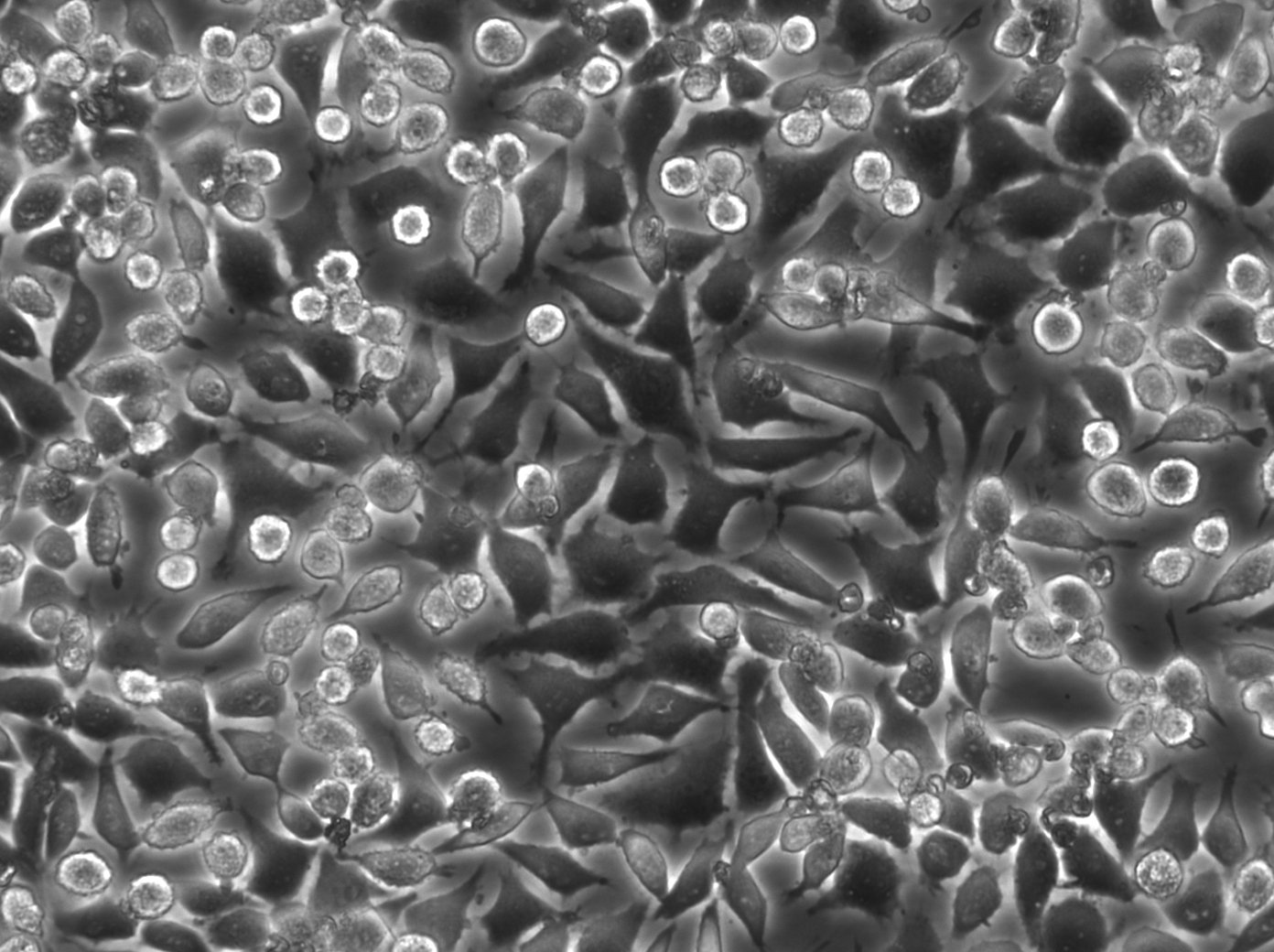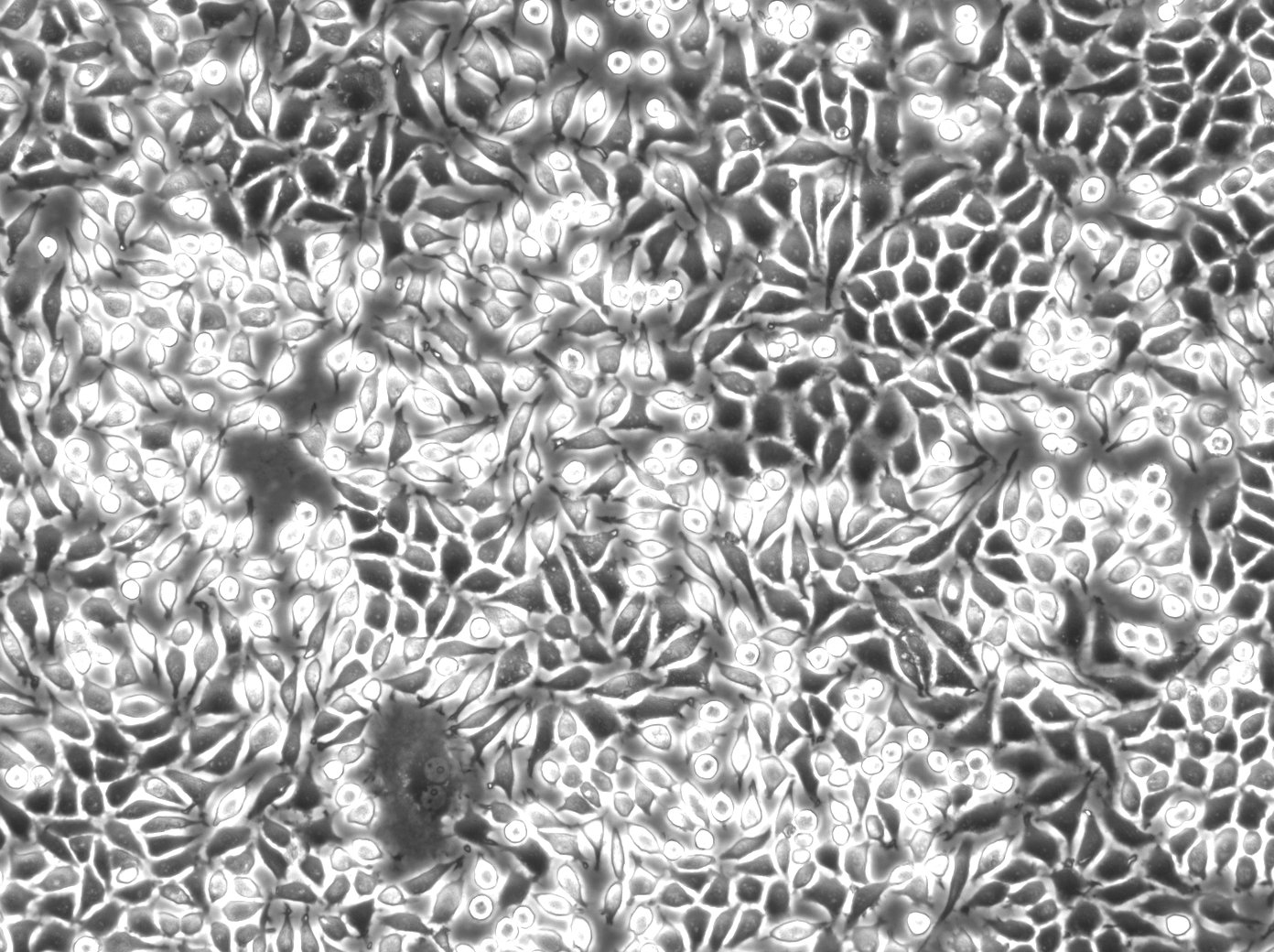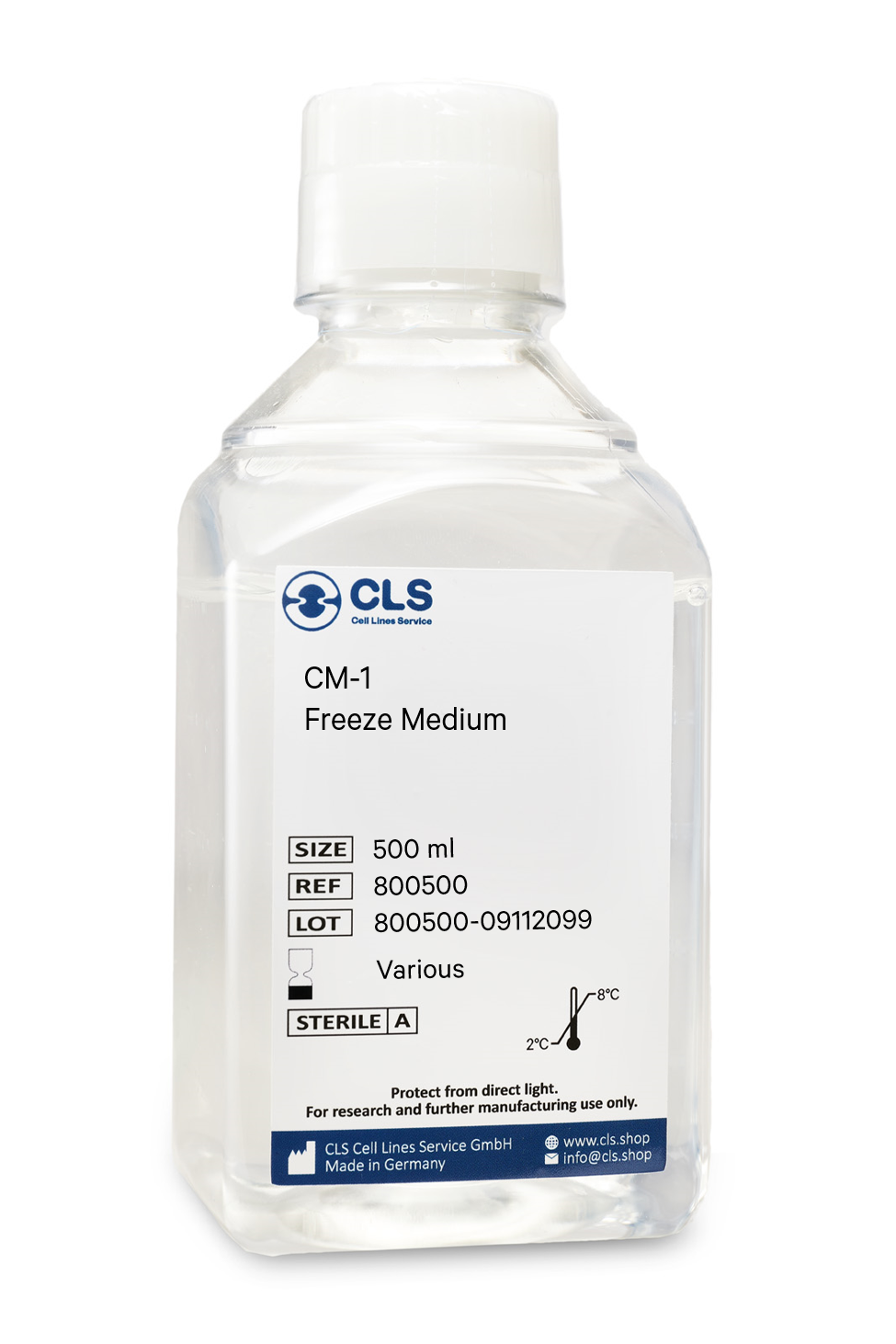L929 Cells
















Key facts about L929 cells
| Description | L-929 cells are a fibroblast-like cell line derived from the subcutaneous connective tissue of a 100-day-old male C3H/An mouse. Established in the 1940s, this cell line has become pivotal in various biological and medical research fields due to its robustness, ease of culture, and versatility in applications. L-929 cells are characterized by their spindle-shaped, fibroblastic morphology, and adherent growth. They are widely used in cytotoxicity assays and serve as a standard model to assess the biocompatibility of materials and the toxic effects of various substances, which is particularly relevant in the fields of biomaterials and tissue engineering. L-929 cells are also employed in the study of cytokine activity, especially in assays for necrosis factor (TNF) activity, due to their sensitivity to TNF-induced cytotoxicity. This makes them valuable in immunology and inflammation research. L-929 cells are further utilized in virology as a host for viral replication studies. Their susceptibility to various viruses, such as the infectious bursal disease virus (IBDV), facilitates the investigation of viral life cycles, host-virus interactions, and the efficacy of antiviral compounds. Overall, the L-929 cell line is a valuable resource in scientific research and offers a versatile platform for studies in cytotoxicity, immunology, virology, and biomaterials. |
|---|---|
| Organism | Mouse |
| Tissue | Connective tissue, normal, subcutaneous, areolar and adipose |
| Synonyms | NCTC clone 929, NCTC 929, NCTC-929, NCTC929, L cell, L cells, L-cell, L-cells, L cell line, L, Strain L-929, L 929, L929, L929(NCTC), Clone 929, Earles's cells, Earle's L cells |
Features of the mouse cell line L929
| Age | 100 days |
|---|---|
| Gender | Male |
| Morphology | Fibroblast-like |
| Cell type | Fibroblast |
| Growth properties | Adherent |
Specifications
| Citation | L-929 (Cytion catalog number 400260) |
|---|---|
| Biosafety level | 1 |
Genotype
| Antigen expression | H-2k |
|---|---|
| Tumorigenic | Yes, in immunosuppressed mice |
| Viruses | Ectromelia virus (mousepox): negative |
| Virus resistance | poliovirus 1, 2, 3, coxsackievirus B5, polyomavirus |
| Reverse transcriptase | positive |
L929 cell purity and Identity checks
| Culture Medium | DMEM:Ham's F12, w: 3.1 g/L Glucose, w: 1.6 mM L-Glutamine, w: 15 mM HEPES, w: 1.0 mM Sodium pyruvate, w: 1.2 g/L NaHCO3 (Cytion article number 820400a) |
|---|---|
| Medium supplements | Supplement the medium with 10% FBS |
| Passaging solution | Accutase |
| Doubling time | 25 hours |
| Subculturing | Remove the old medium from the adherent cells and wash them with PBS that lacks calcium and magnesium. For T25 flasks, use 3-5 ml of PBS, and for T75 flasks, use 5-10 ml. Then, cover the cells completely with Accutase, using 1-2 ml for T25 flasks and 2.5 ml for T75 flasks. Let the cells incubate at room temperature for 8-10 minutes to detach them. After incubation, gently mix the cells with 10 ml of medium to resuspend them, then centrifuge at 300xg for 3 minutes. Discard the supernatant, resuspend the cells in fresh medium, and transfer them into new flasks that already contain fresh medium. |
| Split ratio | A ratio of 1:2 to 1:8 is recommended |
| Seeding density | 2 to 3 x 10^4 cells/cm^2 |
| Fluid renewal | 2 to 3 times per week |
| Freezing recovery | 24 to 48 hours |
| Freeze medium | CM-1 (Cytion catalog number 800100) or CM-ACF (Cytion catalog number 806100) |
| Handling of cryopreserved cultures |
|
Quality control
| Sterility | Mycoplasma contamination is excluded using both PCR-based assays and luminescence-based mycoplasma detection methods. To ensure there is no bacterial, fungal, or yeast contamination, cell cultures are subjected to daily visual inspections. |
|---|---|
| STR profile |
Amelogenin: x,x
M_18-3: 16
M_4-2: 20.3
M_6-7: 12
M_3-2: 13,14
M_19-2: 12
M_7-1: 25,26,27
M_1-1: 10
M_8-1: 16
M_2-1: 9
M_15-3: 24.3,25.3,26.3
M_6-4: 17,18
M_11-2: 15,16
M_1-2: 17
M_17-2: 15
M_12-1: 16
M_5-5: 14
M_X-1: 26,27
M_13-1: 17
Human D4/D8: -
|
Required products
In biological research, the cryopreservation of mammalian cells is an invaluable tool. Successful preservation of cells is a top priority given that losing a cell line to contamination or improper storage conditions leads to lost time and money, ultimately delaying research results. Once the cells have been transferred from a cell growth medium to a freezing medium, the cells are typically frozen at a regulated rate and stored in liquid nitrogen vapor or at below -130°C in a mechanical deep freezer. The freeze medium CM-1 enables cryopreservation of cells at below -130°C (or in liquid nitrogen), essentially eliminating the need for an additional, costly ultralow freezer and eliminating time-consuming and demanding controlled rate freezing processes. Simply collect the cells, aspirate the growth medium, resuspend in CM-1, transfer to a cryovial, and store the vial at below -130 °C.
Long shelf-life
CM-1 is a serum-containing, ready-to-use cryopreservation medium that can be stored in the refrigerator for up to one year.
Trusted by hundreds of researchers
Our advanced cell freezing medium CM-1 is a market-leading product in Germany and Europe and is distinguished by numerous publications involving hundreds of different cell lines worldwide. We tested it with more than 1000 cell lines from our proprietary cell bank.
Optimized ingredients
CM-1 does contain serum products. Serum-containing cryopreservation mediums optimally protect the cells whilst being frozen and have the advantage of high recovery rates. As CM-1 has been tested with a multitude of cell lines, you can rest assured that your cells always recover well.
Contains FBS, DMSO, glucose, salts
Buffering capacity pH = 7.2 to 7.6
Applications & Validation
The cells preserved in our CM-1 freeze medium can be used for cell counting, viability and cryopreservation, cell culture, mammalian cell culture, gene expression analysis and genotyping, in vitro transcription, and polymerase chain reactions. Each batch's efficacy is evaluated using CHO-K1 cells. Each batch is tested for pH, osmolality, sterility, and endotoxins to ensure high quality.
This unique formulation combines Dulbecco's Modified Eagle Medium (DMEM) and Ham's F-12 (Ham's Nutrient Mixture F-12) in a precise 1:1 ratio. The addition of L-glutamine further enhances its composition.
DMEM, derived from Eagle's Minimal Essential Medium (EMEM), offers an increased concentration of amino acids and vitamins compared to its predecessor. In contrast, Ham's F-12 is based on Ham's F-10 medium, providing a complementary set of essential components.
To support optimal cell growth, it is common practice to supplement DMEM:Ham's F12 with FBS at a typical concentration of 5-10%. This addition is necessary as the medium lacks growth hormones, lipids, and proteins crucial for cellular development.
DMEM:Ham's F12 incorporates a pH buffer system and is often supplemented with phenol red, a pH indicator. Cultured cells in DMEM:Ham's F12, or any medium utilizing the bicarbonate buffer system, require a controlled CO2 environment of 5-10% to maintain appropriate pH levels. Phenol red enables monitoring of pH changes from 6.2 (yellow) to 8.2 (red).
Quality Control
pH = 7.2 +/
- 0.02 at 20-25°C.
Each lot has been tested for sterility and absence of mycoplasma and bacteria.
Maintenance
Keep refrigerated at +2°C to +8°C in the dark. Freezing as well as warming up to +37°C minimize the quality of the product.
Do not heat the medium to more than 37°C or use uncontrollable sources of heat (e.g., microwave appliances).
If only a part of the medium is to be used, remove this amount from the bottle and warm it up at room temperature.
Shelf life for any medium except for the basic medium is 8 weeks from the date of manufacture.
Composition
Components
mg/L
Inorganic Salts
Calcium chloride x 2H2O
154,45
Iron(III)-nitrate x 9H2O
0,05
Iron(II)-sulfate x 7H2O
0,42
Potassium chloride
311,83
Copper(II)-sulfate x 5H2O
0.001
Magnesium chloride anhydrous
28,57
Magnesium sulfate
48,85
Sodium chloride
6,999.50
Sodium dihydrogen phosphate anhydrous
54,35
di-Sodium hydrogen phosphate
70,98
Zinc sulfate x 7H2O
0,43
Other Components
D(+)-Glucose anhydrous
3,151.00
HEPES
3,574.50
Hypoxanthine
2,04
Linoleic acid
0,04
DL-68-Lipoic acid
0.103
Sodium pyruvate
110,00
Phenol red
8,10
Putrescin x 2HCl
0.081
Thymidine
0,36
Amino Acids
L-Alanine
4,45
L-Arginine x HCl
147,35
L-Asparagine x H2O
7,50
L-Aspartic acid
6,65
L-Cystine x 2HCl
31,29
L-Cysteine x HCl x H2O
17,56
L-Glutamine
365,00
L-Glutamic acid
7,35
Glycine
18,75
L-Histidine x HCl x H2O
31,48
L-Isoleucine
54,37
L-Leucine
58,96
L-Lysine x HCl
91,37
L-Methionine
17,24
L-Phenylalanine
35,48
L-Proline
17,27
L-Serine
26,25
L-Threonine
53,55
L-Tryptophan
9,02
L-Tyrosine x 2Na x 2H2O
55,81
L-Valine
52,66
Vitamins
D-(+)-Biotine
0,004
D-Calcium pantothenate
2,12
Choline chloride
8,98
Folic acid
2,66
myo-Inositol
12,51
Nicotinamide
2,02
Pyridoxine x HCl
2,03
Riboflavin
0,22
Thiamine x HCl
2,17
Vitamine B12
0,68
NaHCO3
1,200.00
Phosphate-buffered saline (PBS) is a versatile buffer solution used in many biological and chemical applications, as well as tissue processing. Our PBS solution is formulated with high-quality ingredients to ensure a constant pH during experiments. The osmolarity and ion concentrations of our PBS solution are matched to those of the human body, making it isotonic and non-toxic to most cells.
Composition of our PBS Solution
Our PBS solution is a pH-adjusted blend of ultrapure-grade phosphate buffers and saline solutions. At a 1X working concentration, it contains 137 mM NaCl, 2.7 mM KCl, 8 mM Na2HPO4, and 2 mM KH2PO4. We have chosen this composition based on CSHL protocols and Molecular cloning by Sambrook, which are well-established standards in the research community.
Applications of our PBS Solution
Our PBS solution is ideal for a wide range of applications in biological research. Its isotonic and non-toxic properties make it perfect for substance dilution and cell container rinsing. Our PBS solution with EDTA can also be used to disengage attached and clumped cells. However, it is important to note that divalent metals such as zinc cannot be added to PBS as this may result in precipitation. In such cases, Good's buffers are recommended. Moreover, our PBS solution has been shown to be an acceptable alternative to viral transport medium for the transport and storage of RNA viruses, such as SARS-CoV-2.
Storage of our PBS Solution
Our PBS solution can be stored at room temperature, making it easy to use and access.
To sum up
In summary, our PBS solution is an essential component in many biological and chemical experiments. Its isotonic and non-toxic properties make it suitable for numerous applications, from cell culture to viral transport medium. By choosing our high-quality PBS solution, researchers can optimize their experiments and ensure accurate and reliable results.
Composition
Components
mg/L
Inorganic Salts
Potassium chloride
200,00
Potassium dihydrogen phosphate
200,00
Sodium chloride
8,000.00
di-Sodium hydrogen phosphate anhydrous
1,150.00



